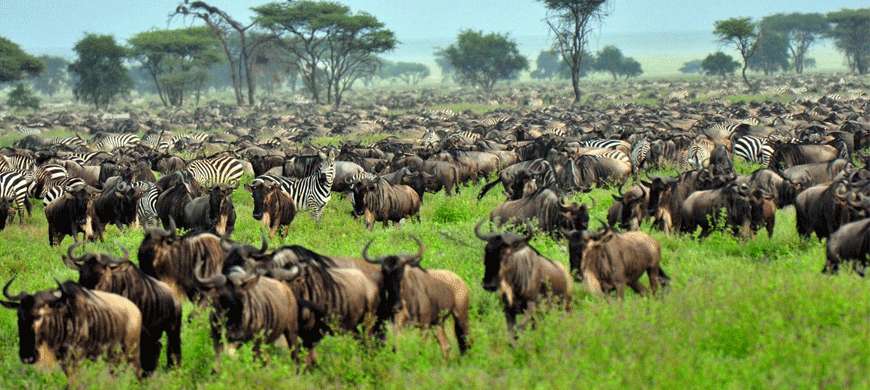
The first animals usually start to set out across the Serengeti in search of more grass and a dependable water supply in April. Over the following months, they’ll encounter countless obstacles—from predators to river crossings—on their hundreds-of-miles-long trek. Here’s a breakdown of their tentative travel schedule, so you can plan your own
December to April
The southern Serengeti is the place to be during these four months when the wildebeest are mostly staying put. Depending on rainfall, herds can be seen between the Ndutu area and the Ngorongoro Conservation Area, which is just southeast of Serengeti National Park. Around February, wildebeest mothers give birth to more than 500,000 calves in a two- to three-week period, so if seeing baby wildebeest or predatory action is a priority, this could be the best time for you to go.
Fun Fact: Within 10 minutes of birth, wildebeest calves are on their feet, so they’re ready to move when the herd decides to head out.
May and June
Once the rainy season is over, the south and east plains of the Serengeti dry out, prompting the beginning of the migration. This usually starts in April or May, and herds begin to move north and west, although not all as one group. Some will head to the Western Corridor and the Grumeti River (where you might spot a crocodile) before proceeding north, and some may also go up through the Loliondo area or through the Seronera area and into Lobo.
July to November
This is traditionally thought of as the best season to view the migration. Between July and August, the wildebeest move into Kenya’s Maasai Mara, crossing the Mara River in large numbers. These river crossings are among the most sought-after moments of the migration. If seeing a river crossing is at the top of your bucket list, this when you should plan your trip to catch a herd tromping through the water.
October to November
It’s not over yet! The migration starts to work its way south into Tanzania, so there will be plenty to see in the southern Maasai Mara in Kenya and in Northern Tanzania.